Matisse, Derain and friends
The Paris Avantgarde 1904–1908
02 Sep 2023 - 21 Jan 2024
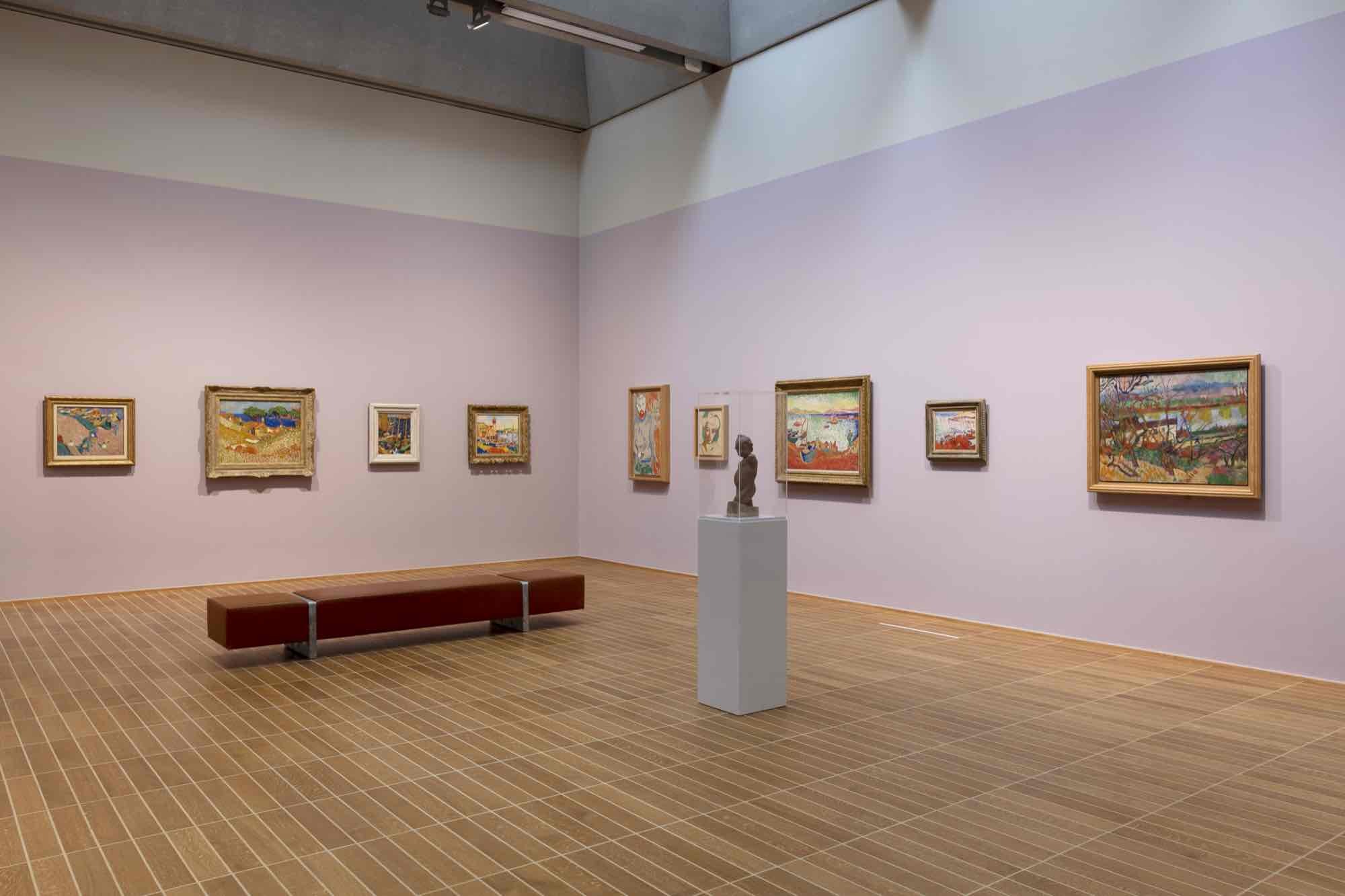
Exhibition view "The Paris Avantgarde 1904–1908", Kunstmuseum Basel | Neubau, 2023. Photo: Gina Folly
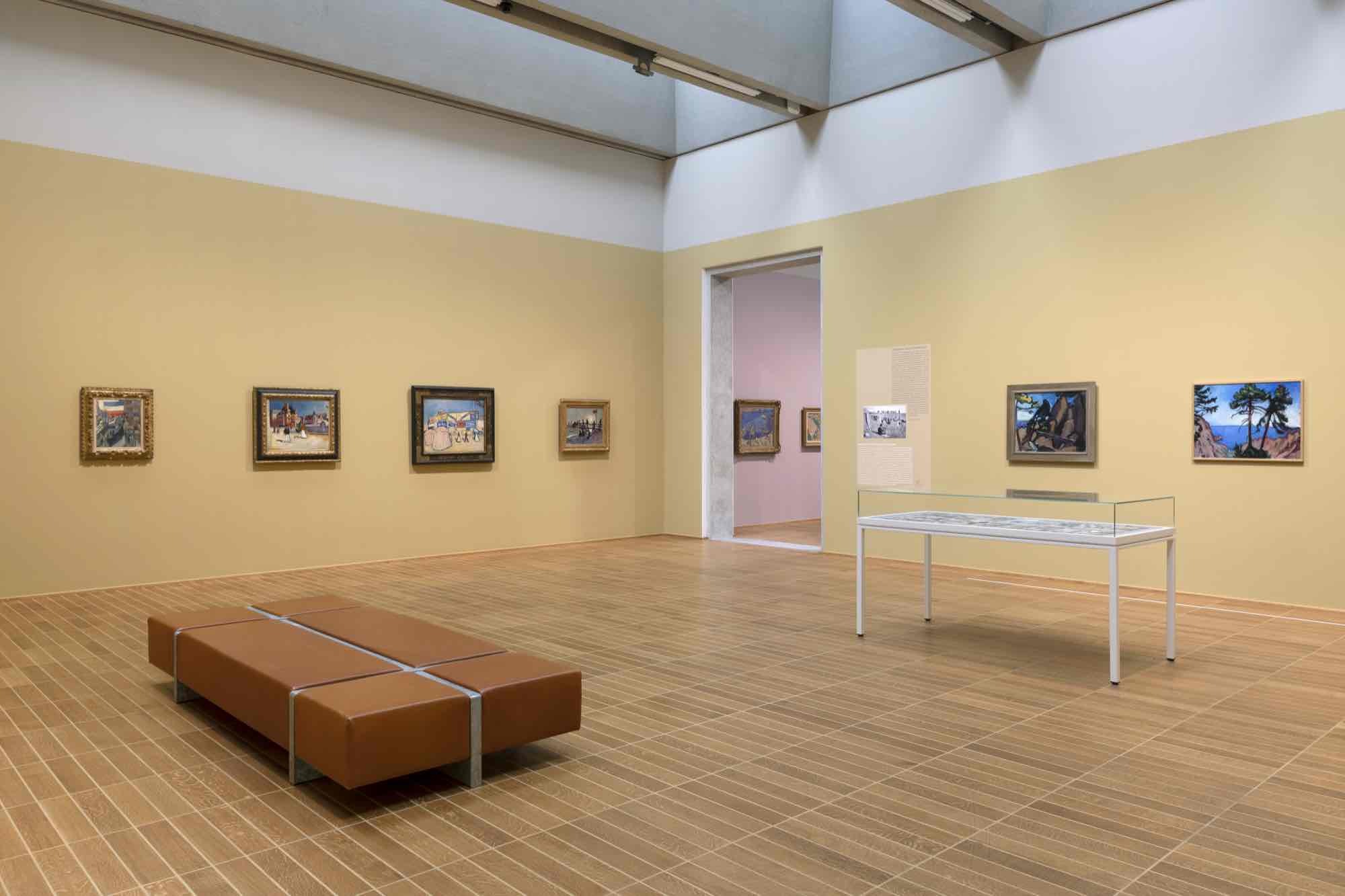
Exhibition view "The Paris Avantgarde 1904–1908", Kunstmuseum Basel | Neubau, 2023. Photo: Gina Folly
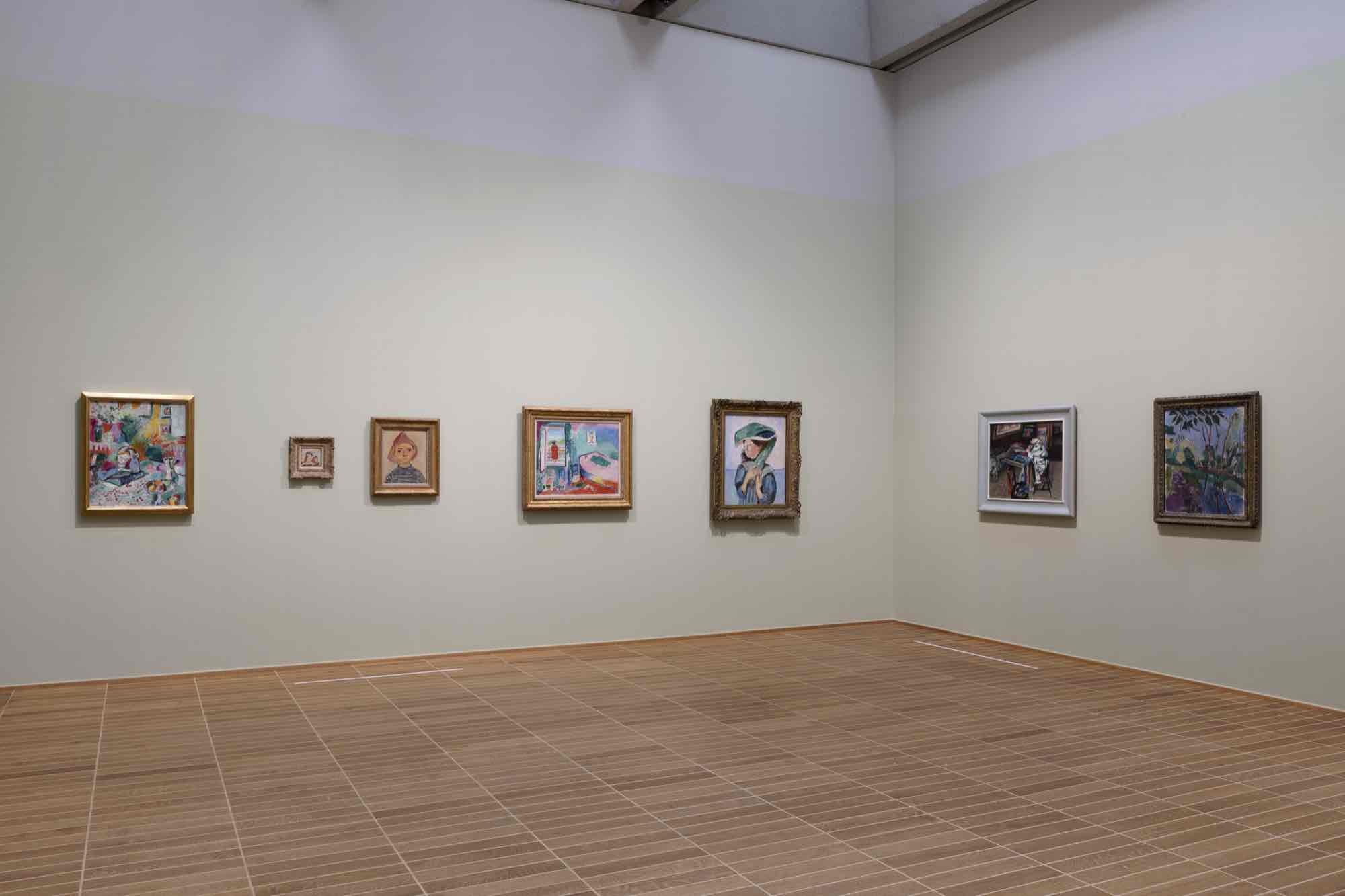
Exhibition view "The Paris Avantgarde 1904–1908", Kunstmuseum Basel | Neubau, 2023. Photo: Gina Folly
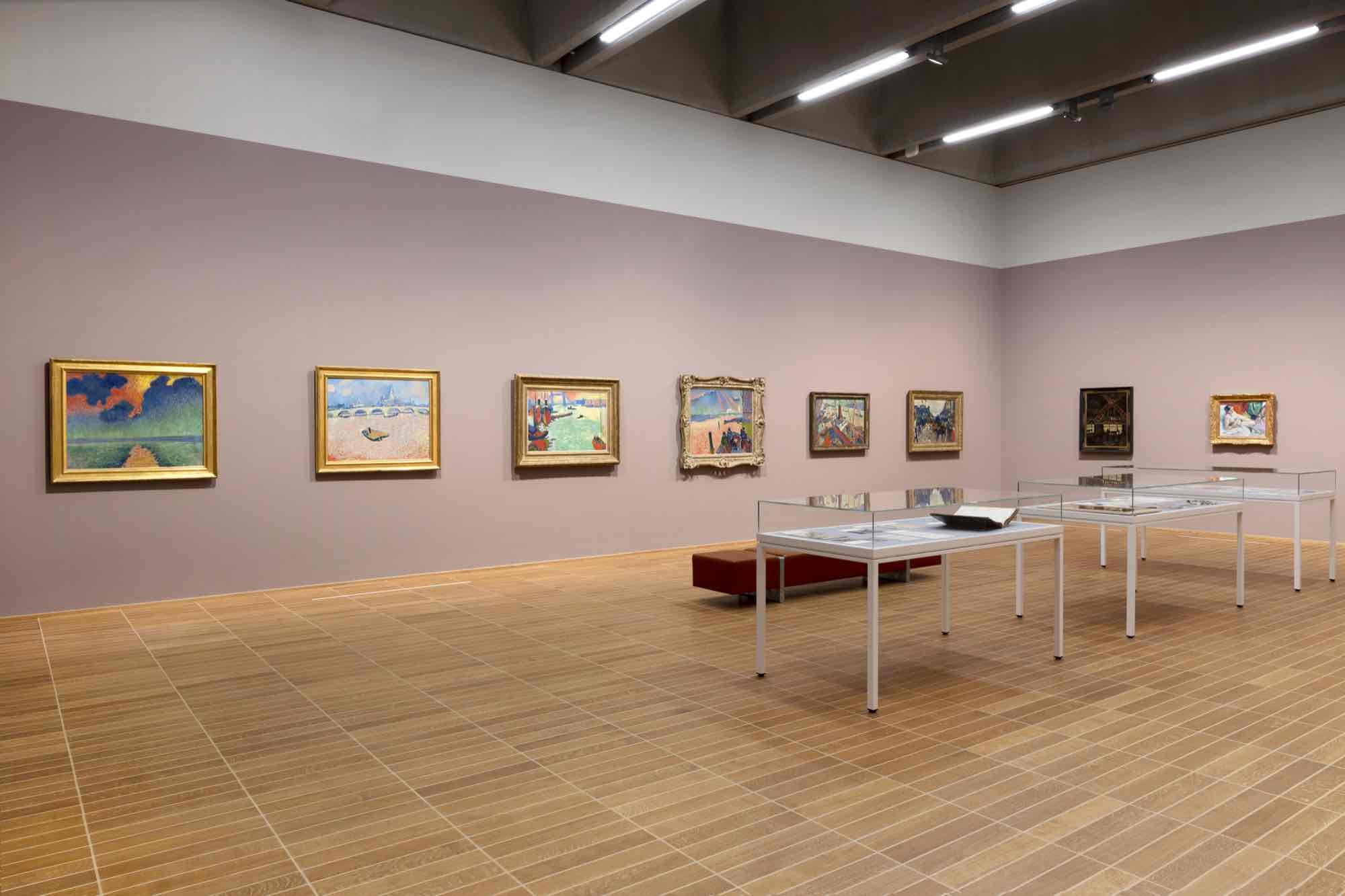
Exhibition view "The Paris Avantgarde 1904–1908", Kunstmuseum Basel | Neubau, 2023. Photo: Gina Folly

Exhibition view "The Paris Avantgarde 1904–1908", Kunstmuseum Basel | Neubau, 2023. Photo: Gina Folly
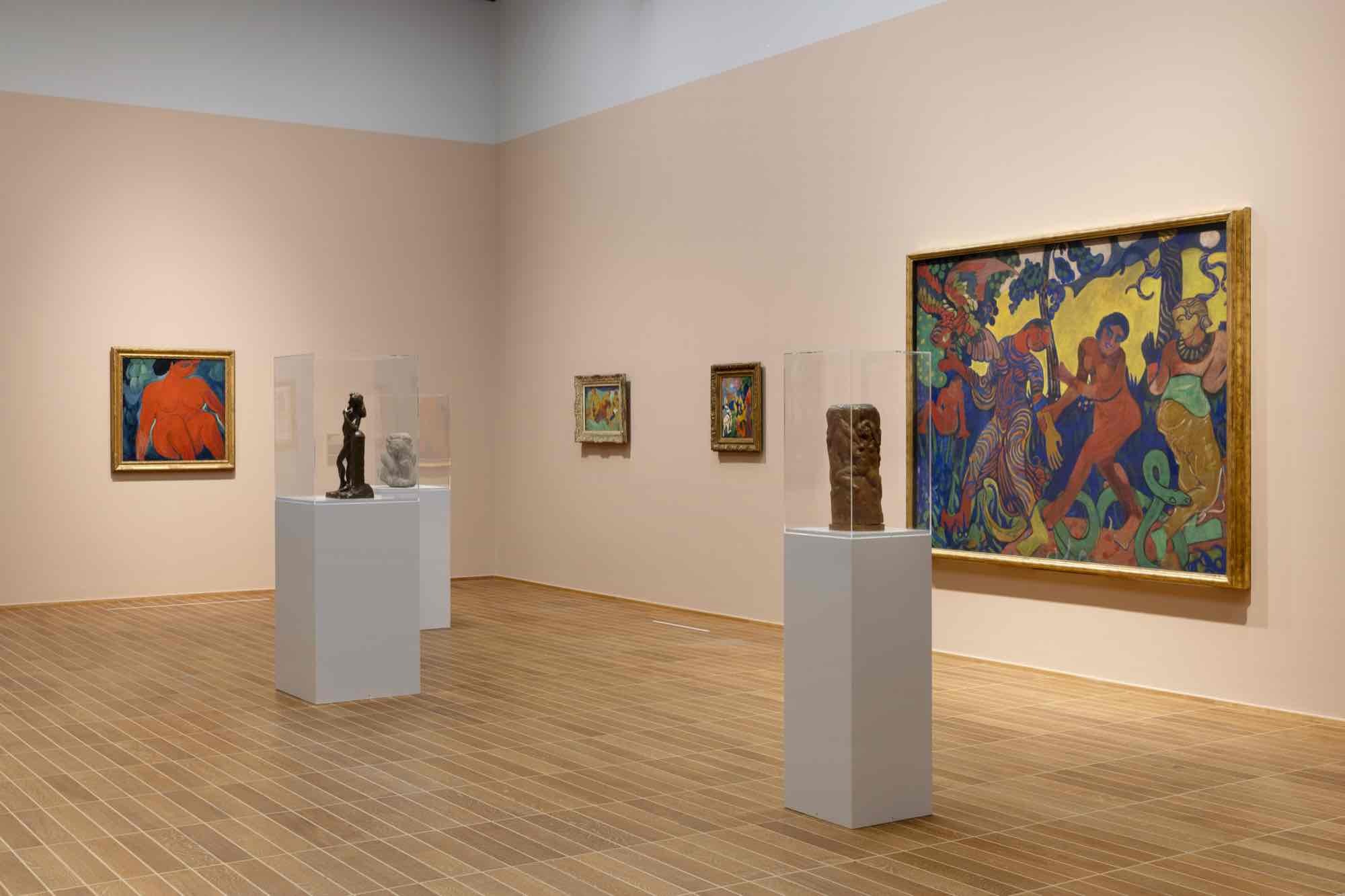
Exhibition view "The Paris Avantgarde 1904–1908", Kunstmuseum Basel | Neubau, 2023. Photo: Gina Folly
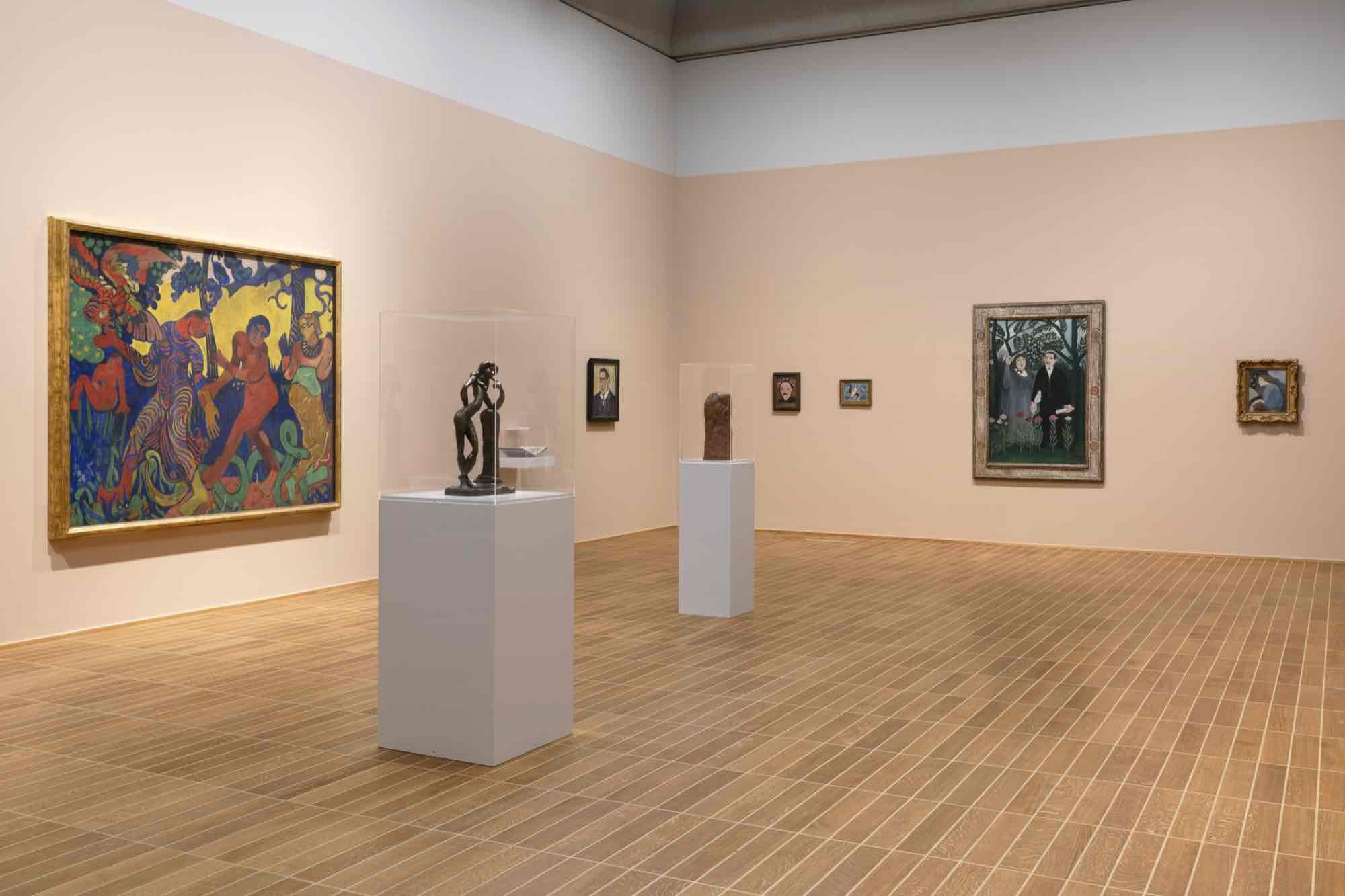
Exhibition view "The Paris Avantgarde 1904–1908", Kunstmuseum Basel | Neubau, 2023. Photo: Gina Folly
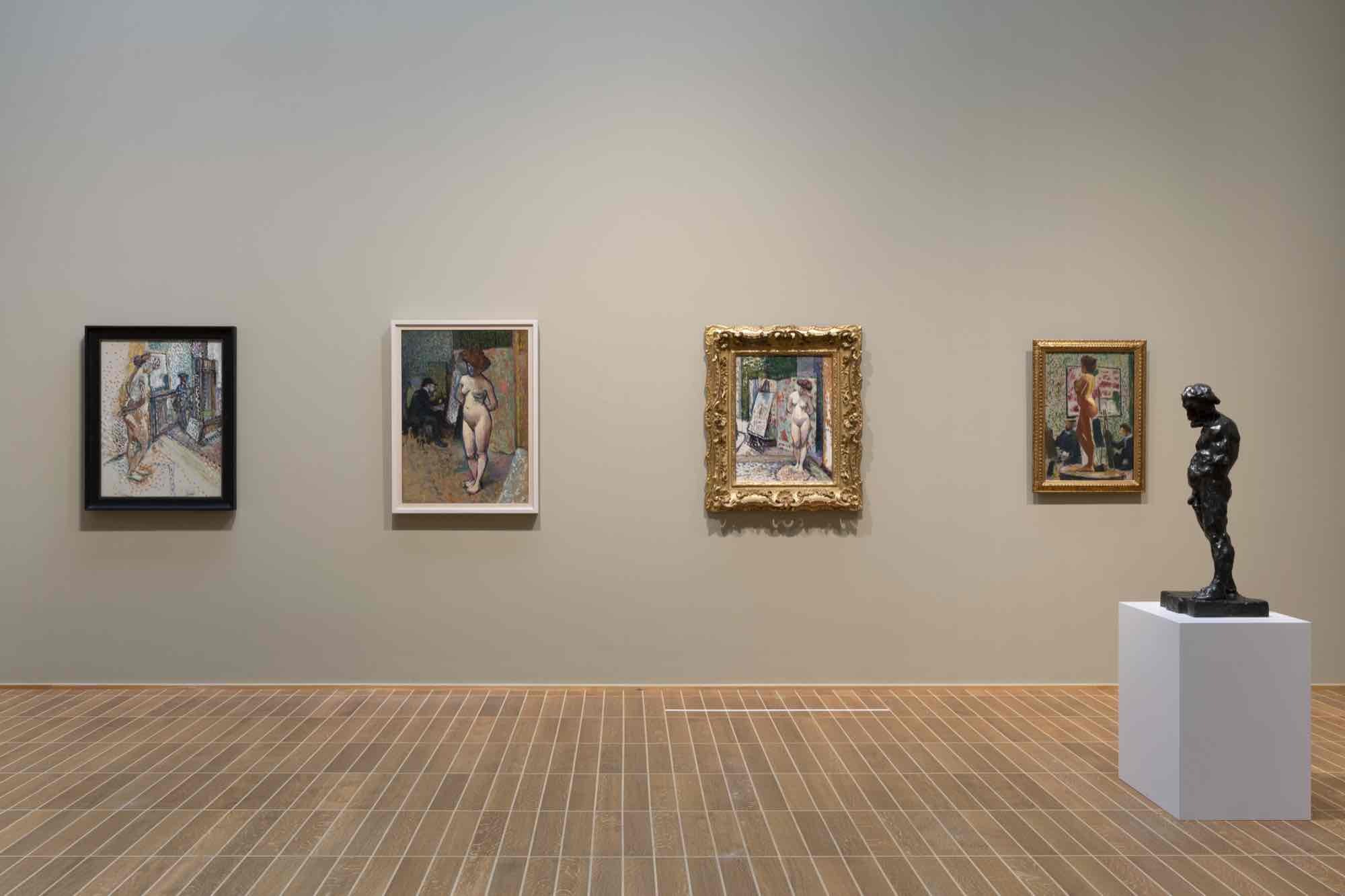
Exhibition view "The Paris Avantgarde 1904–1908", Kunstmuseum Basel | Neubau, 2023. Photo: Gina Folly
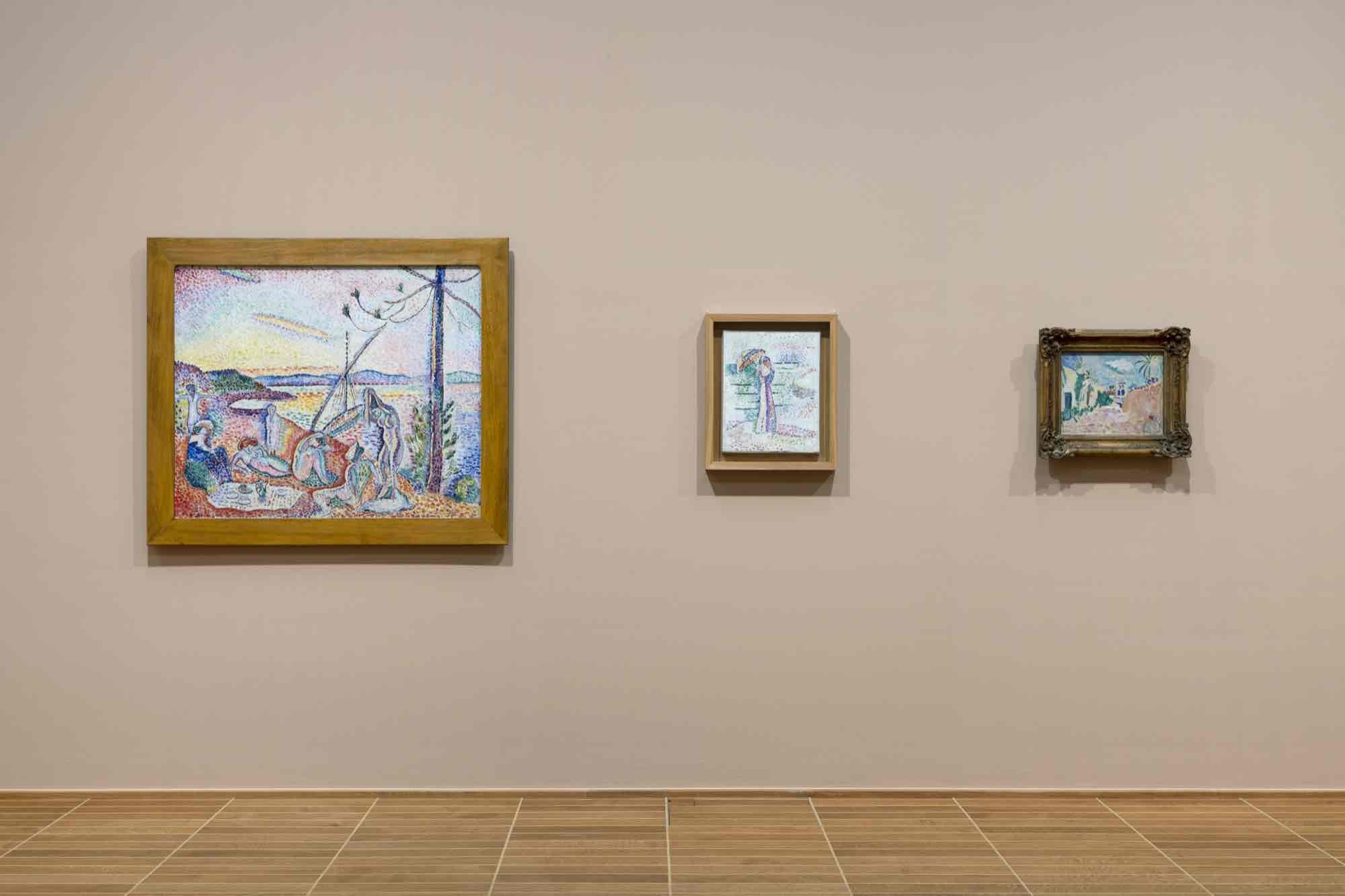
Exhibition view "The Paris Avantgarde 1904–1908", Kunstmuseum Basel | Neubau, 2023. Photo: Gina Folly
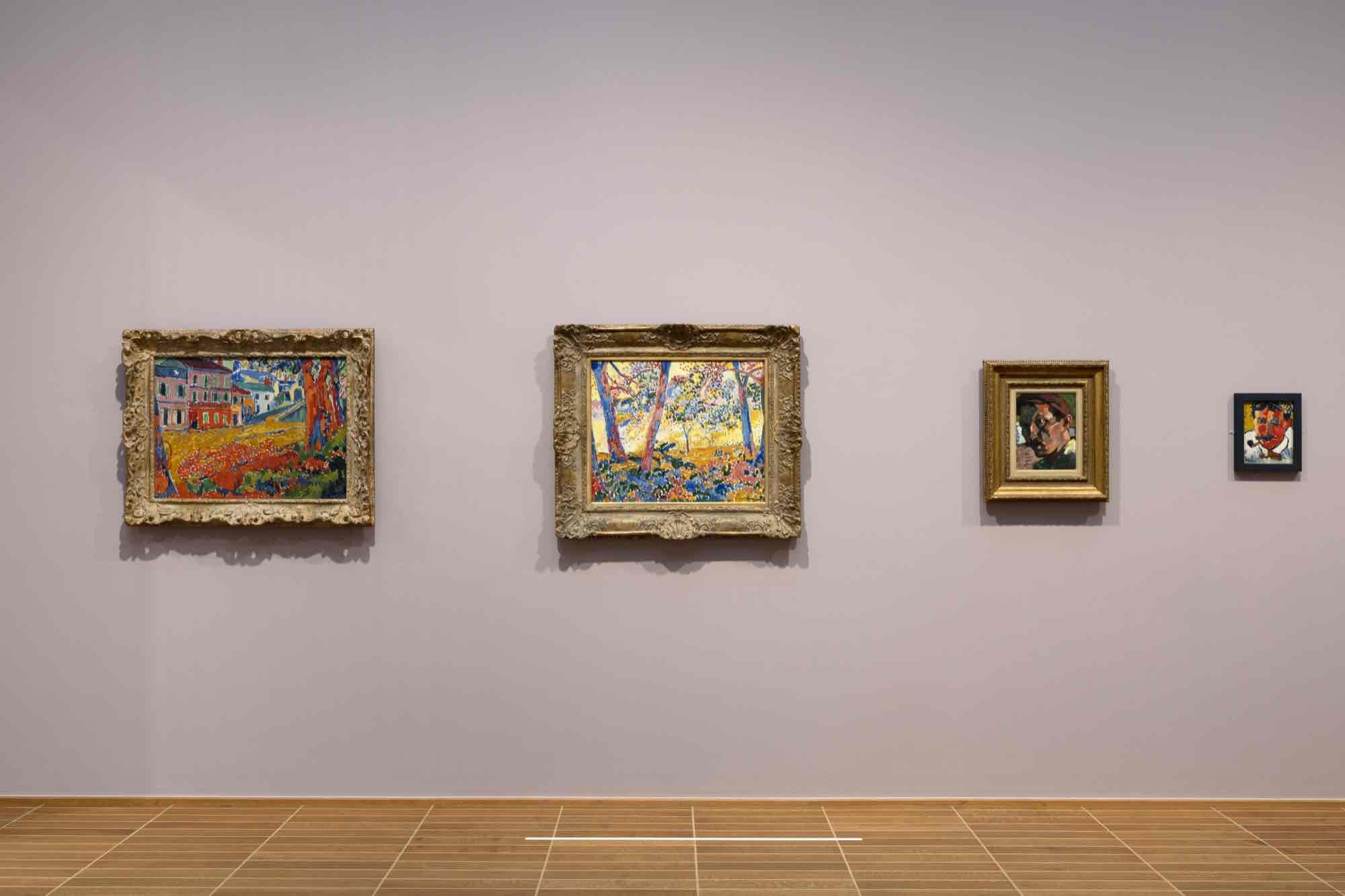
Exhibition view "The Paris Avantgarde 1904–1908", Kunstmuseum Basel | Neubau, 2023. Photo: Gina Folly
The grand special exhibition Matisse, Derain and Friends at the Kunstmuseum Basel | Neubau is dedicated to the first avant-garde movement of the twentieth century: the Fauves. Presenting around 160 first-rate works, many of which have never been shown in Switzerland, it turns the spotlight on the experiments with color that Henri Matisse, André Derain, Georges Braque, Maurice de Vlaminck, and others undertook between 1904 and 1908. It illuminates the roles of art critics and the art market in the emergence and establishment of the movement, which paved the way for Cubism.
Fauvism has had a lasting influence on the discourses of painting in modernism and beyond. The term fauves (“big cats” or “wild beasts”) was coined by Louis Vauxcelles in a review of the 1905 Salon d’Automne. The critic used it to describe the expressive application of paint and the unusual combinations of colors, which represented a revolutionary challenge to the prevailing conventions of painting. The pictures, which shocked contemporary audiences with their garish colors, moreover borrowed motifs from French naïve painting as well as formal features from non-Western art and medieval pictorial traditions. The term fauves encapsulated the general disdain in which the culturally conservative haute bourgeoisie of Paris held progressive painting. The loosely associated group of artists around Matisse and Derain promptly adopted the disparaging label and capitalized on the scandal.
The exhibition Matisse, Derain and Friends illustrates how the Fauves as a group were put on the map in the art world of the time, which was undergoing profound changes. The painters did not pursue a distinct aesthetic agenda spelled out in programmatic writings or manifestos, and they came from heterogeneous social and artistic milieus. What united them was their interest in the paintings of the Post- and NeoImpressionists, of Georges Seurat, Vincent van Gogh, Paul Cezanne, and Paul Gauguin
Pure, unmixed colors
In 1905, Matisse and Derain summered together in Collioure, a fishing village in the south of France. It was there that they developed the painterly strategies that subsequently earned them the moniker fauves. The defining characteristic of their work from this period is that they eschewed the imitative rendering of colors and light-dark contrasts. The emotional content of the depiction was what mattered most, and pure, unmixed colors were to convey it to the beholder.
The Fauves broke with established principles of composition. Many of their paintings have neither an identifiable pictorial center nor an organizing structure of foreground, middle ground, and background. They are executed without primers and preliminary sketches, and to look at them is to experience paint as a physical material with an intensity that is unprecedented in the history of art: one can virtually see the painter applying it to the canvas, and the brushstrokes evince a vibrant tactile quality. In thematic terms, the artists prove exceptionally versatile. Their motifs range from harbor and street scenes to intimate family pictures, from nocturnal revelries to subjects from consumer culture.
After the scandal at the 1905 Autumn Salon, where the young artists garnered the consequential characterization as “wild beasts,” colleagues from Le Havre joined the Fauves: Raoul Dufy, Georges Braque, and Othon Friesz. They developed their art in critical engagement with Impressionism and repeatedly visited places and landscapes that had been painted by the preceding generation of artists, including Normandy and villages in the south of France such as L’Estaque and La Ciotat. Their studies were facilitated by the modern touristic infrastructure and the expanding rail network
Fauvism in context
With its connotations of virility, the name Fauves suggests that women artists were excluded. But as the exhibition Matisse, Derain and Friends reveals, women played a vital, though rarely acknowledged, role in Fauvism. Among them were Amélie ParayreMatisse, who, with her textile designs, provided the economic basis for her husband’s art, and the art dealer Berthe Weill, who lent substantial support to the Fauves in the movement’s early days and organized an important exhibition in October 1905, shortly after the scandal at the Salon. Weill was also among the few patrons of art who promoted women artists; she mounted early exhibitions of works by Émilie Charmy and Marie Laurencin, both of whom were arguably associated with the Fauves. A portrait of André Derain’s wife Alice by Laurencin, who was endearingly described as “la biche (the hind) parmi les fauves” or “la fauvette,” is on view at the Kunstmuseum. As Georges Braque’s fellow student and Guillaume Apollinaire’s partner, Laurencin was admitted to the avant-gardist circle, which nonetheless remained a men’s club that kept her down.
The exhibition also portrays Fauvism in its context in contemporary history: the pictures reflect phenomena of consumer society; several artists simultaneously worked as caricaturists and took an interest in the nascent advertising business and the rapidly growing leisure and tourism industry. Historic streetscapes illustrate the urban everyday life and the fashions of the Belle Époque. In collaboration with the Paris-based historian Gabrielle Houbre, the Kunstmuseum Basel presents historic sources that offer insight into the social reality of the sex workers among whom the Fauves recruited some of their models.
First-rate loans and highlights
Matisse, Derain and Friends showcases ca. 160 works by Georges Braque, Charles Camoin, Émilie Charmy, Sonia and Robert Delaunay, André Derain, Kees van Dongen, Raoul Dufy, Othon Friesz, Marie Laurencin, Henri Charles Manguin, Albert Marquet, Henri Matisse, Jean Puy, Maurice de Vlaminck, and other artists associated with the Fauves from international public and private collections, including the Centre Pompidou, Paris; the Museum of Modern Art and the Metropolitan Museum, New York; the Musée Matisse, Nice; the National Gallery of Art, Washington, D.C.; the Statens Museum for Kunst, Copenhagen; Staatsgalerie Stuttgart; Tate Modern, London; and Kunsthaus Zürich.
Several chief works by Henri Matisse are on display in the exhibition, including Luxe, Calme et Volupté (1904), La Gitane (1905), Le Tapis Rouge, and La Sieste (both 1906). Another highlight is the ensemble of his outstanding early sculptures from the Musée Matisse in Nice. In his treatise Notes of a Painter (1908), the most important arttheoretical source on Fauvism, Matisse writes that the depiction of the figure more than anything else has constantly challenged and stimulated his creative energies. André Derain is represented by works from his eminent London Paintings series and the monumental La Danse (all 1906), widely acclaimed as his early masterpiece, among other treasures. Many of the works in the exhibition have not been on public view in decades.
Curators: Arthur Fink, Claudine Grammont, Josef Helfenstein
Fauvism has had a lasting influence on the discourses of painting in modernism and beyond. The term fauves (“big cats” or “wild beasts”) was coined by Louis Vauxcelles in a review of the 1905 Salon d’Automne. The critic used it to describe the expressive application of paint and the unusual combinations of colors, which represented a revolutionary challenge to the prevailing conventions of painting. The pictures, which shocked contemporary audiences with their garish colors, moreover borrowed motifs from French naïve painting as well as formal features from non-Western art and medieval pictorial traditions. The term fauves encapsulated the general disdain in which the culturally conservative haute bourgeoisie of Paris held progressive painting. The loosely associated group of artists around Matisse and Derain promptly adopted the disparaging label and capitalized on the scandal.
The exhibition Matisse, Derain and Friends illustrates how the Fauves as a group were put on the map in the art world of the time, which was undergoing profound changes. The painters did not pursue a distinct aesthetic agenda spelled out in programmatic writings or manifestos, and they came from heterogeneous social and artistic milieus. What united them was their interest in the paintings of the Post- and NeoImpressionists, of Georges Seurat, Vincent van Gogh, Paul Cezanne, and Paul Gauguin
Pure, unmixed colors
In 1905, Matisse and Derain summered together in Collioure, a fishing village in the south of France. It was there that they developed the painterly strategies that subsequently earned them the moniker fauves. The defining characteristic of their work from this period is that they eschewed the imitative rendering of colors and light-dark contrasts. The emotional content of the depiction was what mattered most, and pure, unmixed colors were to convey it to the beholder.
The Fauves broke with established principles of composition. Many of their paintings have neither an identifiable pictorial center nor an organizing structure of foreground, middle ground, and background. They are executed without primers and preliminary sketches, and to look at them is to experience paint as a physical material with an intensity that is unprecedented in the history of art: one can virtually see the painter applying it to the canvas, and the brushstrokes evince a vibrant tactile quality. In thematic terms, the artists prove exceptionally versatile. Their motifs range from harbor and street scenes to intimate family pictures, from nocturnal revelries to subjects from consumer culture.
After the scandal at the 1905 Autumn Salon, where the young artists garnered the consequential characterization as “wild beasts,” colleagues from Le Havre joined the Fauves: Raoul Dufy, Georges Braque, and Othon Friesz. They developed their art in critical engagement with Impressionism and repeatedly visited places and landscapes that had been painted by the preceding generation of artists, including Normandy and villages in the south of France such as L’Estaque and La Ciotat. Their studies were facilitated by the modern touristic infrastructure and the expanding rail network
Fauvism in context
With its connotations of virility, the name Fauves suggests that women artists were excluded. But as the exhibition Matisse, Derain and Friends reveals, women played a vital, though rarely acknowledged, role in Fauvism. Among them were Amélie ParayreMatisse, who, with her textile designs, provided the economic basis for her husband’s art, and the art dealer Berthe Weill, who lent substantial support to the Fauves in the movement’s early days and organized an important exhibition in October 1905, shortly after the scandal at the Salon. Weill was also among the few patrons of art who promoted women artists; she mounted early exhibitions of works by Émilie Charmy and Marie Laurencin, both of whom were arguably associated with the Fauves. A portrait of André Derain’s wife Alice by Laurencin, who was endearingly described as “la biche (the hind) parmi les fauves” or “la fauvette,” is on view at the Kunstmuseum. As Georges Braque’s fellow student and Guillaume Apollinaire’s partner, Laurencin was admitted to the avant-gardist circle, which nonetheless remained a men’s club that kept her down.
The exhibition also portrays Fauvism in its context in contemporary history: the pictures reflect phenomena of consumer society; several artists simultaneously worked as caricaturists and took an interest in the nascent advertising business and the rapidly growing leisure and tourism industry. Historic streetscapes illustrate the urban everyday life and the fashions of the Belle Époque. In collaboration with the Paris-based historian Gabrielle Houbre, the Kunstmuseum Basel presents historic sources that offer insight into the social reality of the sex workers among whom the Fauves recruited some of their models.
First-rate loans and highlights
Matisse, Derain and Friends showcases ca. 160 works by Georges Braque, Charles Camoin, Émilie Charmy, Sonia and Robert Delaunay, André Derain, Kees van Dongen, Raoul Dufy, Othon Friesz, Marie Laurencin, Henri Charles Manguin, Albert Marquet, Henri Matisse, Jean Puy, Maurice de Vlaminck, and other artists associated with the Fauves from international public and private collections, including the Centre Pompidou, Paris; the Museum of Modern Art and the Metropolitan Museum, New York; the Musée Matisse, Nice; the National Gallery of Art, Washington, D.C.; the Statens Museum for Kunst, Copenhagen; Staatsgalerie Stuttgart; Tate Modern, London; and Kunsthaus Zürich.
Several chief works by Henri Matisse are on display in the exhibition, including Luxe, Calme et Volupté (1904), La Gitane (1905), Le Tapis Rouge, and La Sieste (both 1906). Another highlight is the ensemble of his outstanding early sculptures from the Musée Matisse in Nice. In his treatise Notes of a Painter (1908), the most important arttheoretical source on Fauvism, Matisse writes that the depiction of the figure more than anything else has constantly challenged and stimulated his creative energies. André Derain is represented by works from his eminent London Paintings series and the monumental La Danse (all 1906), widely acclaimed as his early masterpiece, among other treasures. Many of the works in the exhibition have not been on public view in decades.
Curators: Arthur Fink, Claudine Grammont, Josef Helfenstein
